In 1972, the National Conference of Catholic Bishops (NCCB) offered its first pastoral letter completely devoted to the concern of Catholic education. The bishops spoke in the language emerging out of the Second Vatican Council. They spoke in the words of To Teach as Jesus Did (TJD). The voice was substantial and sent three clear messages. First, the very process that produced TJD was highly consultative. Second, its 150 paragraphs, covering just 42 pages, echoed the immediate preconciliar, conciliar and postconciliar documents: Mater et Magistra, Dogmatic Constitution of the Church, On Christian Education, On Human Life, On the Apostolate of the Laity, On the Ministry of Bishops, and the General Catechetical Directory. Finally, the content and tone of the document is directed to immediate concerns of a particular church realizing the vision of the conciliar decrees. To Teach as Jesus Did was intended specifically not to be timeless; it gave prophetic voice to concerns that are just as real more than two decades after its publication (Walsh, 1972, 80).
The overview of this document tells us about the decision of the NCCB to imitate the way Jesus would teach. This significance of teaching as Jesus would is extraordinary; it correlates what was presented earlier with the utilization of the opening quotes from the instructors notes. The Church is within a constant change, this change is primarily involving catechetical guidelines.
I agree with the threefold goals of the document. The goals are to articulate the mission, to identify those ministry areas clearly identified with this mission and to set an agenda for action. The mission was articulated as a lifelong process of “integrated ministry embracing three interlocking dimensions: the message revealed by God which the church proclaims; fellowship in the life of the Holy Spirit; service to the Christian community and the entire human community. Each educational program or institution under church sponsorship is obliged to contribute in its own way to the realization of the threefold purpose within the total educational ministry” (Walsh, 1972, 81).
To Teach as Jesus Did is particularly generous in its treatment of the topics of higher education, Catholic colleges and universities, campus ministry, and theology and the Catholic universities. In the two other areas where TJD is as generous in its treatment—religious education and Catholic schools—the agenda is specific and directed. Aware that “historically, Catholic colleges and universities have had varying degrees of relationship to ecclesiastical authority, TJD seeks to offer broad but real parameters for the development of the ministry of higher education (Walsh, 1972, 82).
The document notes the importance of parish programs for young people not attending Catholic schools, stating that “among the pastoral issues in education today challenge the Catholic community in our nation, none is more pressing that providing Catholic education for these young people” (Walsh, 1972, 82). Parish programs of religious education have inherent limitations and suffer because of parental and pastoral indifference, that lack of systematic programs and skilled leadership, and poorly trained volunteers. Under-funded and understaffed, a parish religious education is not realizing the threefold purpose, or plan of Catholic education in-deepening the experience of Christian community, sharing the message and going for the in service to transform the world in word and action, merely teaching religion is not enough (Walsh, 1972, 82).
The many divergent traditions and vocabularies gathered as total Catholic education are reconciled in TJD by using the term “religious education” interchangeably with “catechesis,” a process that continues in the popular Catholic tradition. This practice may have been used in order to build bridges, for catechesis is a term that unites sacramental, formational and initiatory theology, while religious education is a term that can unite scholastic and quais-scholastic processes.
To Teach as Jesus Did reflects solid conciliar teaching, wide consultation, an articulate direction for the wide enterprise of lifelong formation in faith that is founded in building Christian community, sharing the message, going for the in service and gather in worship. It sets an agenda for the work as yet unfinished, which ensures its place as a contemporary, prophetic voice (Walsh, 1972, 84).
Christian Education
"Since all Christians have become by rebirth of water and the Holy Spirit a new creature(8) so that they should be called and should be children of God, they have a right to a Christian education. A Christian education does not merely strive for the maturing of a human person as just now described, but has as its principal purpose this goal: that the baptized, while they are gradually introduced the knowledge of the mystery of salvation, become ever more aware of the gift of Faith they have received, and that they learn in addition how to worship God the Father in spirit and truth (cf. John 4:23) especially in liturgical action, and be conformed in their personal lives according to the new man created in justice and holiness of truth (Eph. 4:22-24); also that they develop into perfect manhood, to the mature measure of the fullness of Christ (cf. Eph. 4:13) and strive for the growth of the Mystical Body; moreover, that aware of their calling, they learn not only how to bear witness to the hope that is in them (cf. Peter 3:15) but also how to help in the Christian formation of the world that takes place when natural powers viewed in the full consideration of man redeemed by Christ contribute to the good of the whole society.(9) Wherefore this sacred synod recalls to pastors of souls their most serious obligation to see to it that all the faithful, but especially the youth who are the hope of the Church, enjoy this Christian education."
Gravissimum Educationis
Gravissimum Educationis
Thursday, March 19, 2009
Subscribe to:
Post Comments (Atom)


























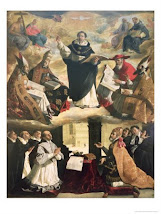
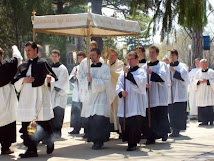

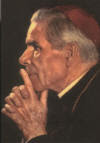

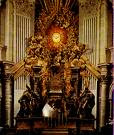
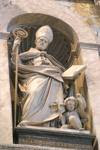



No comments:
Post a Comment